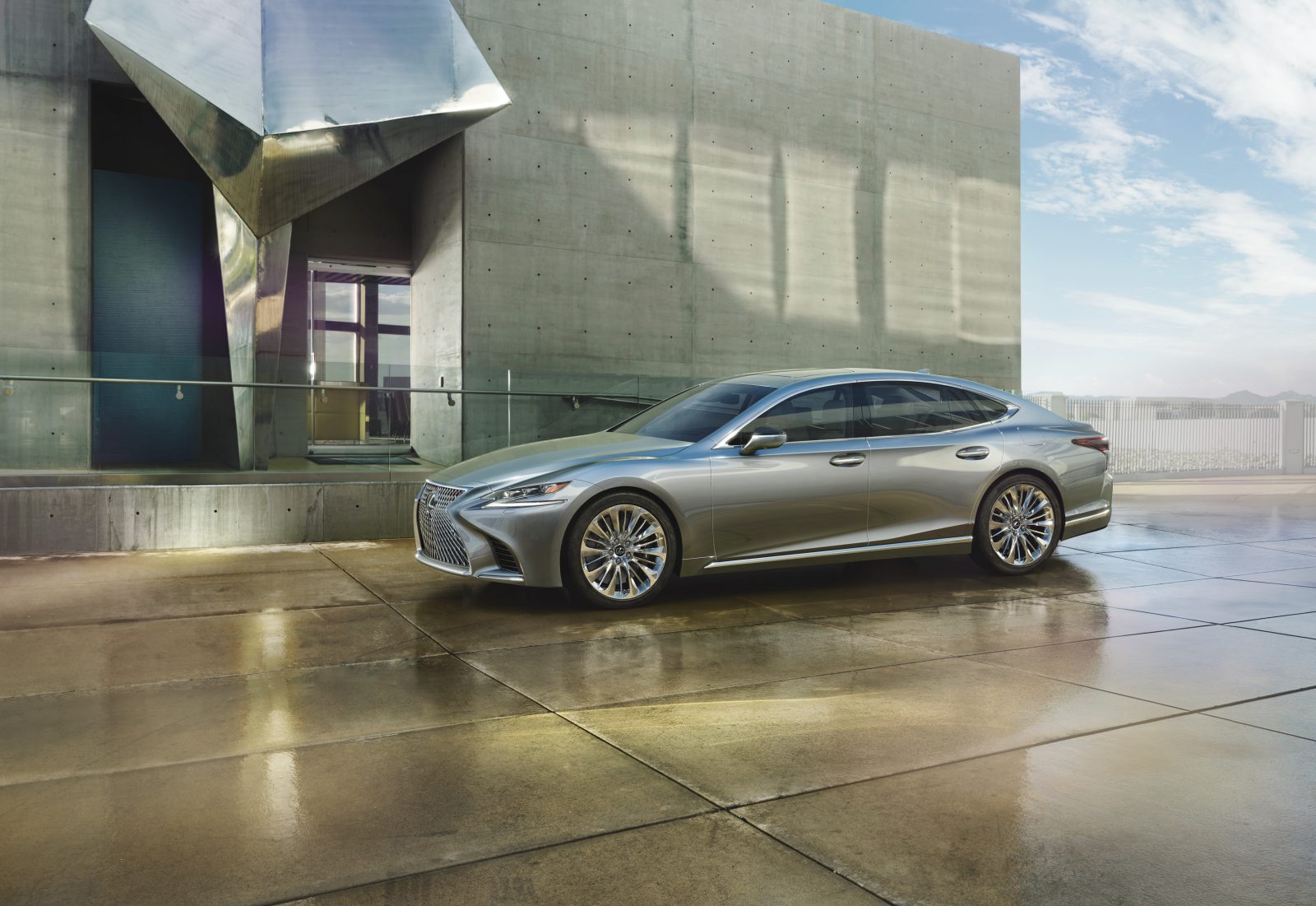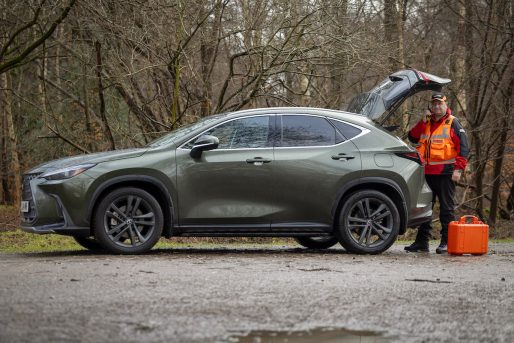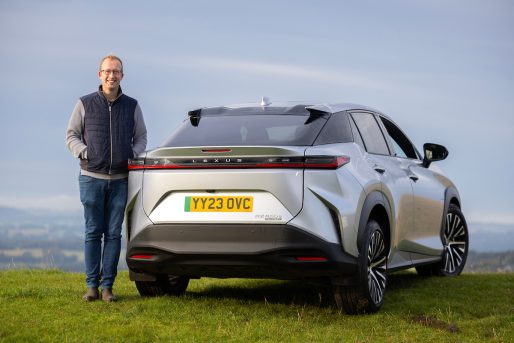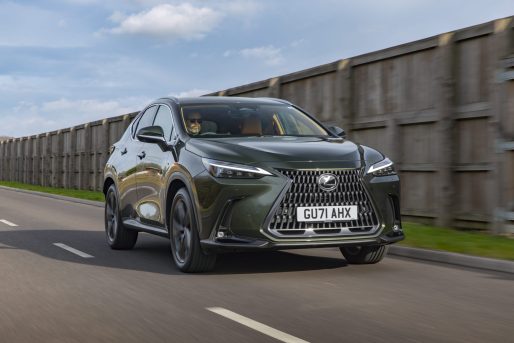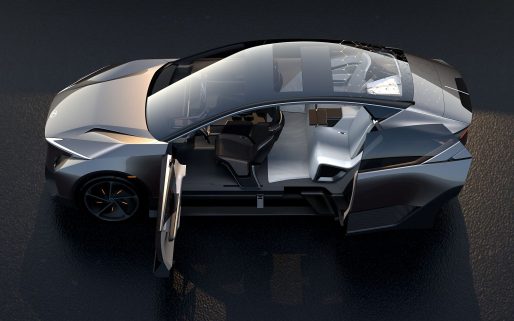The new 2018 Lexus LS is true to Lexus’s more dynamic direction. Each previous generation of the model marked advances in luxury, craftsmanship, performance and safety in their own way, with the most recent version adding much more emotional design and engaging performance to the mix.
To create the new LS, Lexus started afresh, reimagining what a flagship saloon should be as if it were launching its brand all over again. The goal was not to improve on what has been done before but to exceed the expectations of luxury customers worldwide.
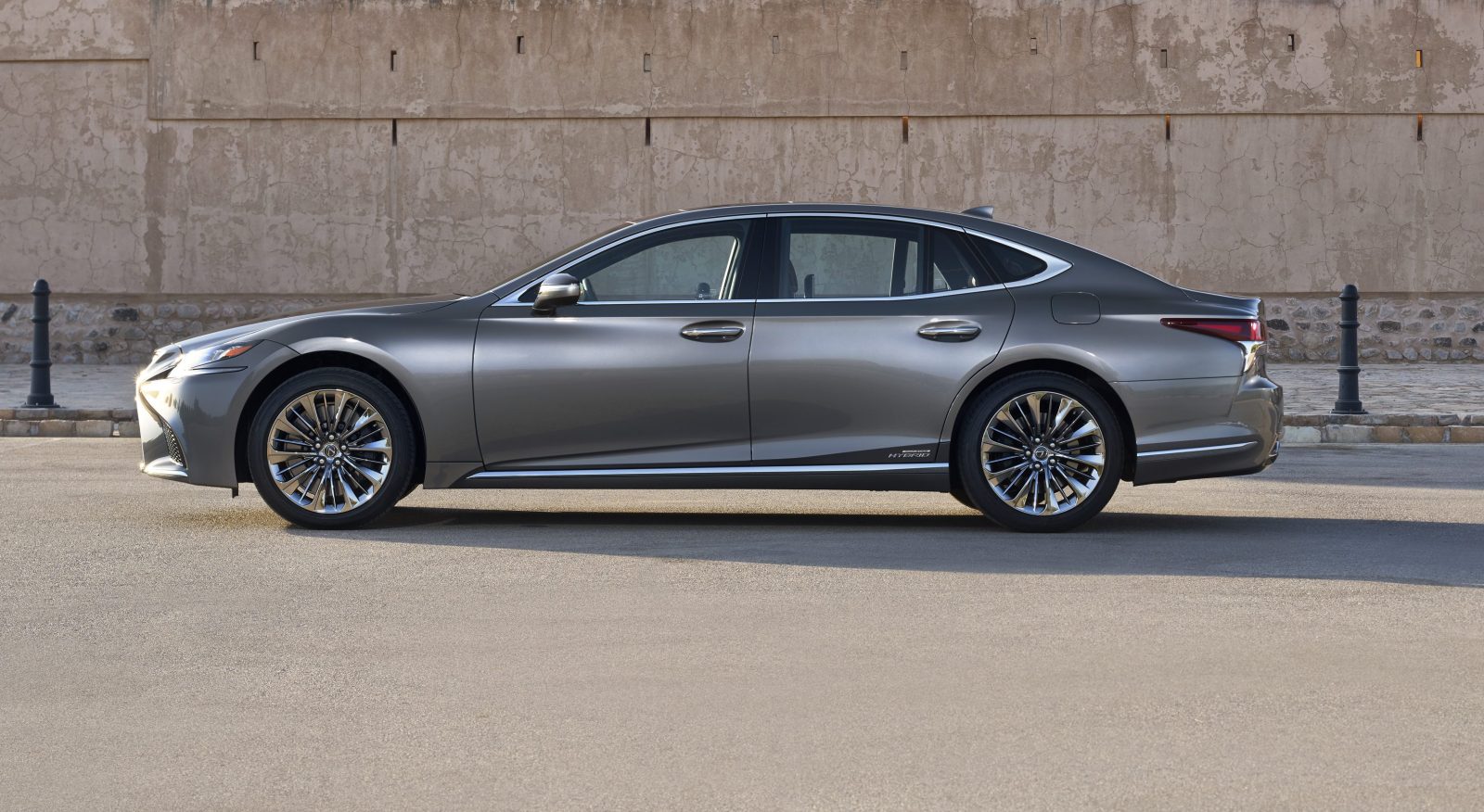
Omotenashi, the Japanese concept of hospitality, remains a common thread that runs through all LS models. In the context of a luxury automobile, it means taking care of the driver and passengers, anticipating their needs, attending to their comfort and protecting them from hazards.
2018 Lexus LS: exterior design
As the flagship of the range, the LS has always played a pivotal role in defining Lexus, embodying the brand’s image and what it stands for. With the new 2018 Lexus LS saloon, there was an opportunity to tear up the rulebook and create something with its own unique identity.
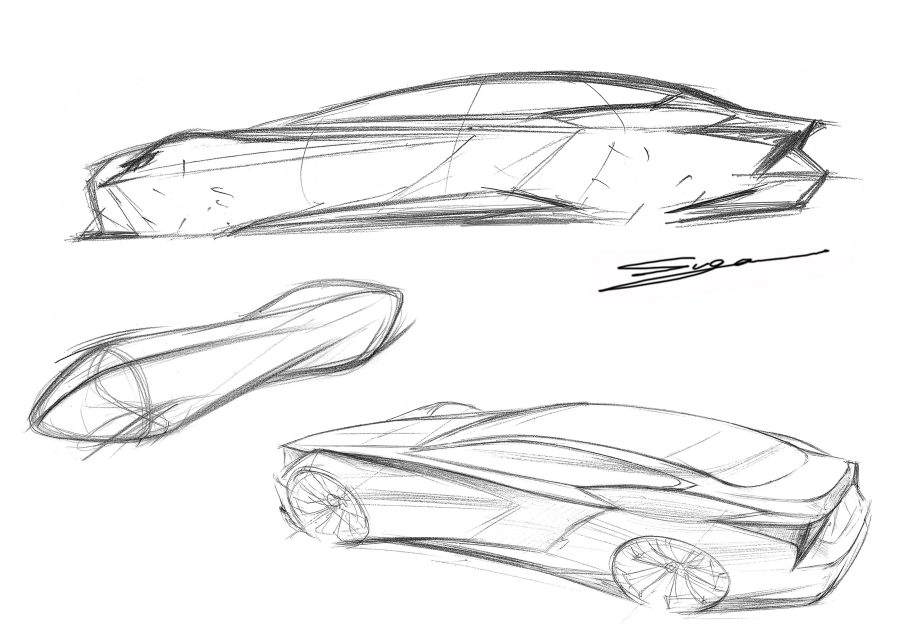
The low-slung, coupe-like silhouette eschews the established saloon car form, without compromising the interior spaciousness and comfort that are fundamental to a flagship luxury vehicle.
The designers were helped in their mission by the new Global Architecture-Luxury platform, which allows for a longer wheelbase, spacious interior and a lower, ground-hugging appearance.
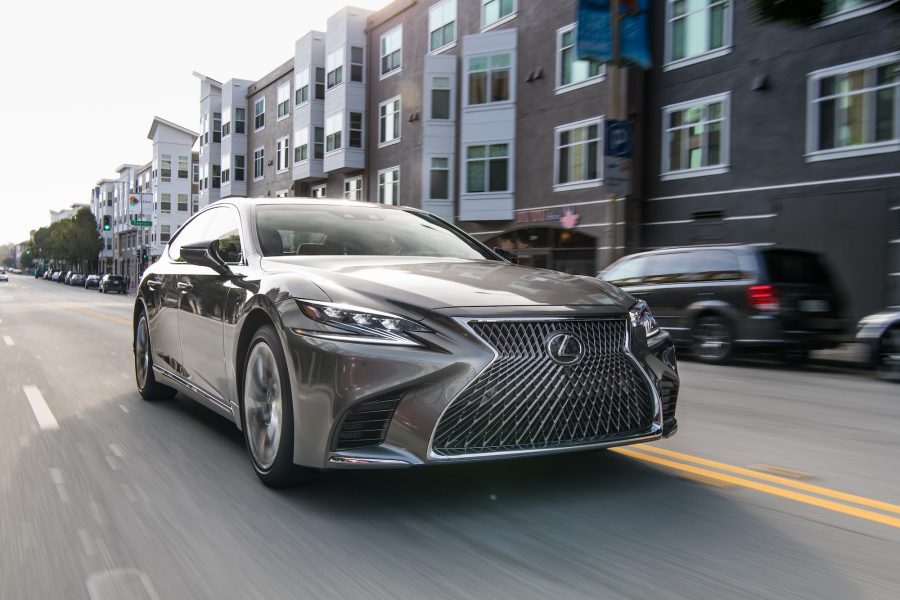
There is incredible attention to detail in evidence throughout the car’s exterior, not least in the powerful interpretation of the spindle grille. This intricate design has 5,000 individual surfaces which took a highly-skilled CAD modeller six months to develop.
The grille is central to the new LS’s beautifully sculpted design, acting as the starting point for the lines that flow through the body and converge at the rear.
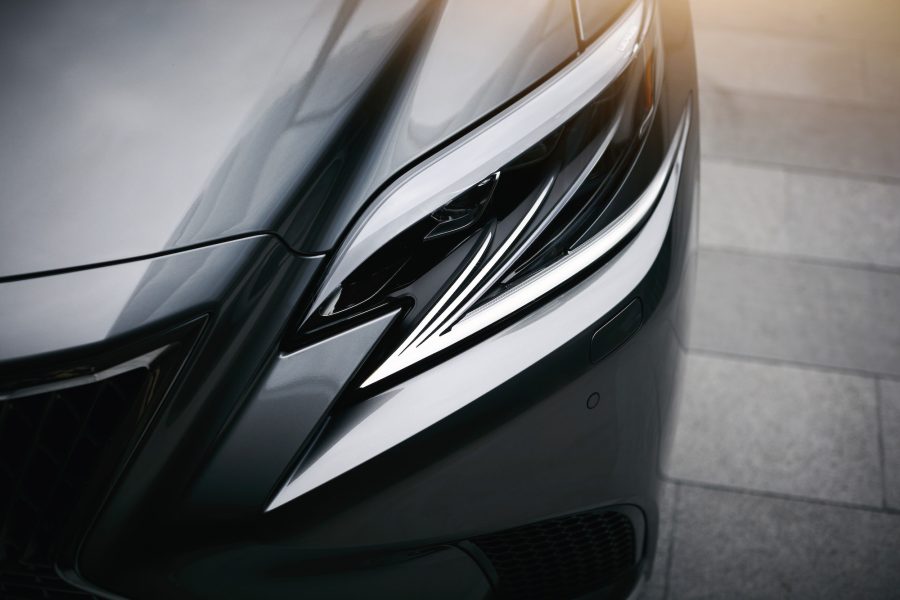
The front of the car is given even more presence by the slimline, triple bi-LED headlights, which are set in an L configuration that wraps around the front of the car.
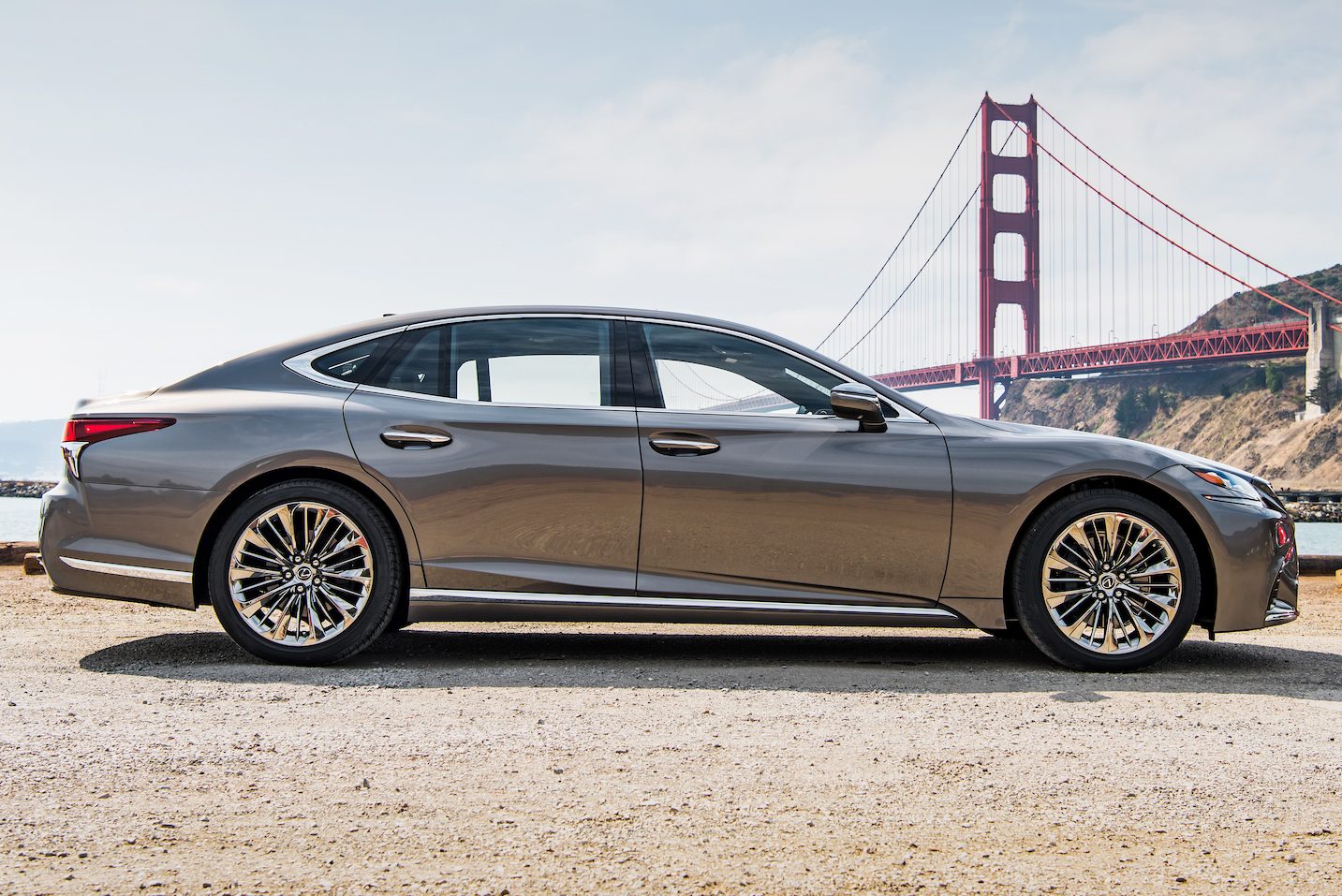
A strong shoulder line running from front to rear emphasises the LS’s ground-hugging appearance and low centre of gravity, while the lines of the front and rear wings are slanted forward, hinting at the car’s dynamic qualities.
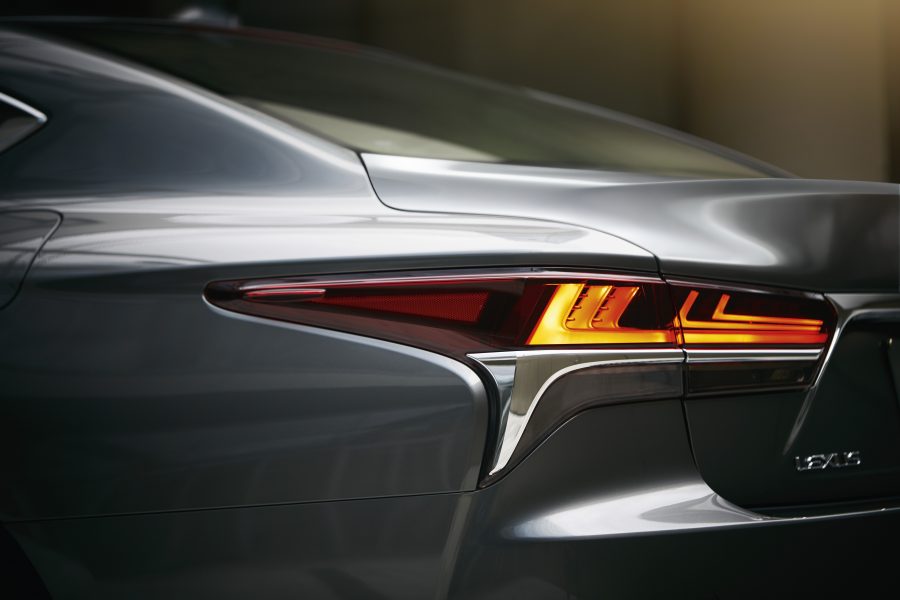
The shoulder line then flows through to the rear, linking to the LED headlights, which are instantly recognisable as belonging to a Lexus thanks to their strong ‘L’ motif. The shoulder line then folds down and back on itself, echoing the lines of the spindle grille at the front.
Spindle Grille
The pattern on the evolved, iconic spindle grille is of such delicate complexity it required an unusually high level of human skill in both the design and fabrication stages to complete. From the computer screen to the finished product, constant artisan involvement ensured the beauty of the designer’s original vision was fully expressed.
The new design features a single intricate span of interlocking Lexus ‘L’ motifs, a web-like tapestry inspired by the delicate patterns of those found in nature. While previous designs called for two separate upper and lower moulds, the designers at Lexus challenged themselves to express the new incredibly complex grille as a single, integrated piece.
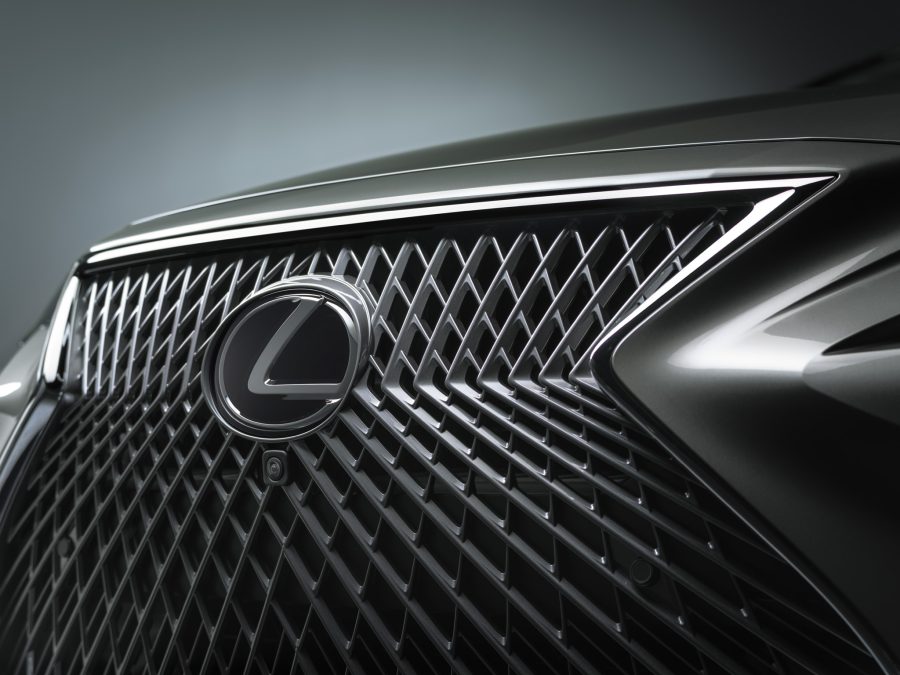
While the computer modelling program rendered the pattern with reasonable accuracy, completing the precise design required a human eye. Augmenting the computer render was a skilled design modeller in an unprecedented display of dedication to detail, working a typical eight-hour day over a six-month period to individually adjust the curved surfaces of five thousand motifs on-screen.
Reflecting the performance spirit of the LS F Sport variant, the grille has an even more dynamic expression requiring edits to over seven thousand surfaces. Now complete, the intricate, computer-rendered pattern – finished by meticulous human manipulation into a work of art – continues its journey in the hands of a metal mould Takumi.
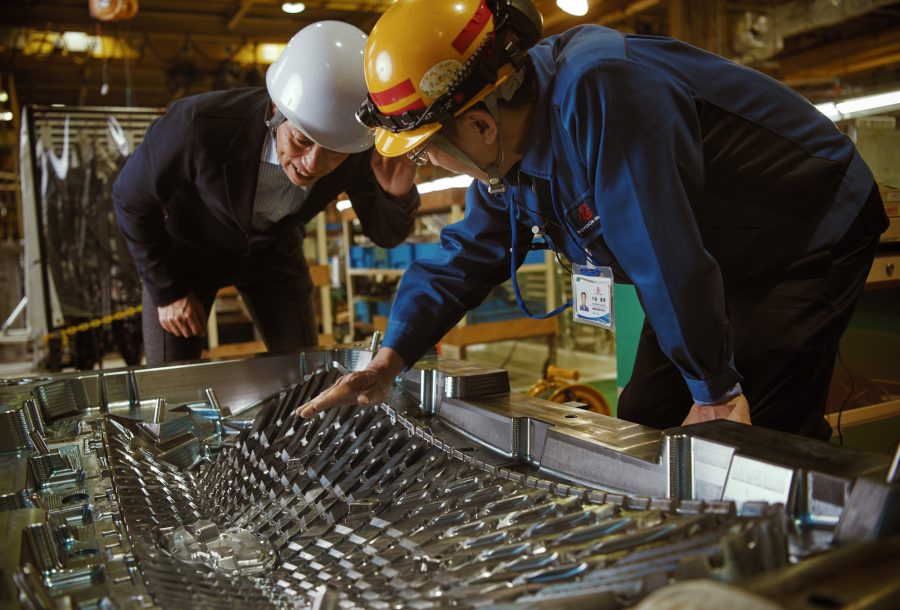
‘Takumi’ describes a craftsperson with the highest levels of technical skill and precise application, honed over decades of experience in his or her field of expertise. Yasuhiro Nakashima has spent 27 years learning and honing his craft: filing, shaping and polishing metal moulds to extremely exact levels.
The Takumi master possesses a natural competitiveness and a passion to be the best at what he does, the depth of his dedication illustrated in his own set of customized tools – including hand-made bamboo instruments to shape finer details. When Nakashima received the all-new Lexus LS spindle grille design from the Lexus Design team, he needed to bring his passionate artisanship to ensure the mould’s accuracy.
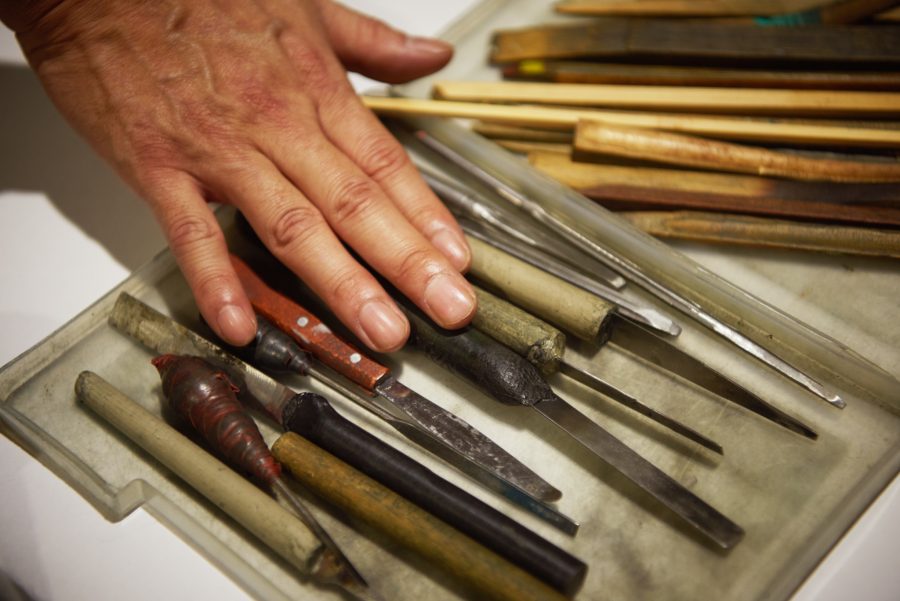
The uncommonly large single grille required the finished mould to be structurally sound while also accurately reflecting the finely detailed design. The machines and processes used to create the mould are among the very best available anywhere but – reflecting the same human factor in the design – finishing with absolute accuracy required a remarkable human skill. With his customized toolset and experienced eye, Nakashima is able to refine surface smoothness to within 100 microns (0.1 millimetres) – a difference even the best robotic milling technology cannot detect.
During the finishing, he also anticipates details that technology cannot, polishing by hand the minute individual surfaces in directions that improve the reflective aesthetic of the grille’s final coating. These details may not be readily noticeable but are further indications of the dedication he applies to his craft with techniques refined over decades.
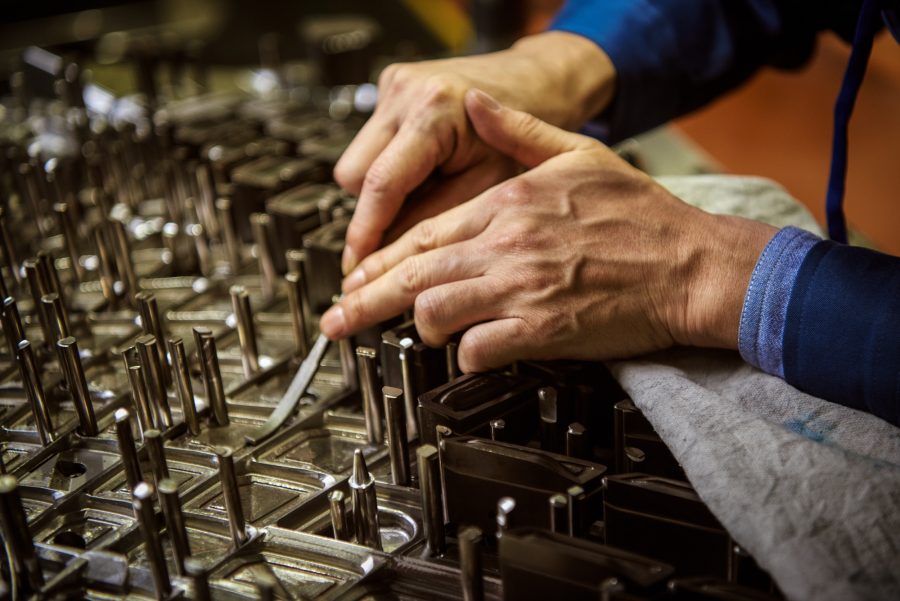
Fabricating a mould to the exactness articulated in the design demanded extra attention from Nakashima that helped push the production stage out to five months – over a month longer than usual. Throughout the process, he collaborated with the design team – each challenging the other, designer and craftsman working together to ensure the very best outcome.
Koichi Suga, Lexus Project Chief Designer, compliments Nakashima: “We consistently pushed our partners beyond previous thresholds to help deliver a vehicle that delights the public enough to want to buy it. I know this can be very difficult at times but I also know Nakashima-san shares our vision and worked extremely hard to realize our design.”
Nakashima concludes: “I want those who see the grille to appreciate the design and to feel wonder over its creation. I want them to be amazed at first glance.”
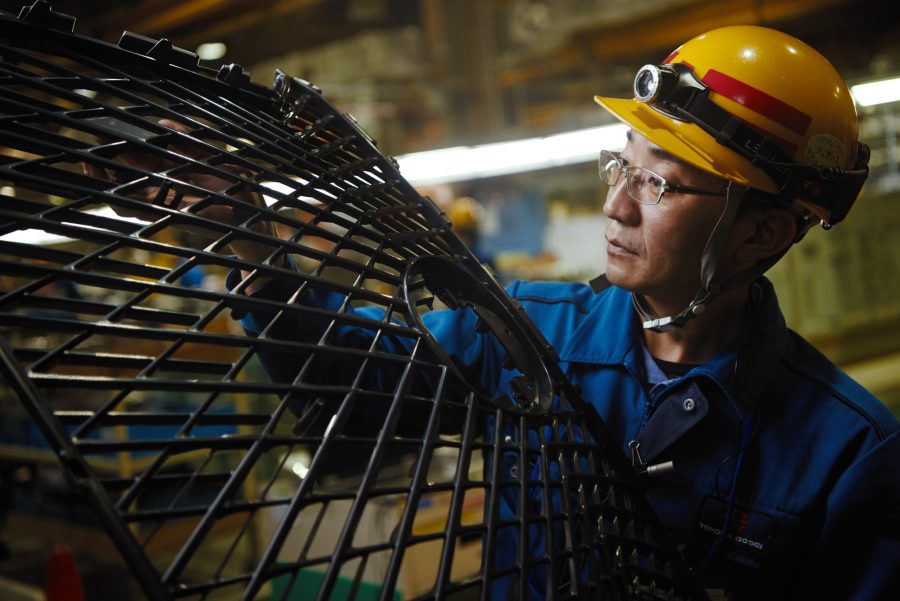
Lexus has redefined its flagship sedan and set it apart from the competition with its unique, imaginative design and elevated levels of craftsmanship that make the impossible a reality. And that story begins at the front, with the completely re-imagined spindle grille.
2018 Lexus LS: interior design
The interior of the new fifth-generation Lexus LS offers a remarkable environment for both driver and passengers, combining modern design with traditional Japanese aesthetics and advanced manufacturing techniques.
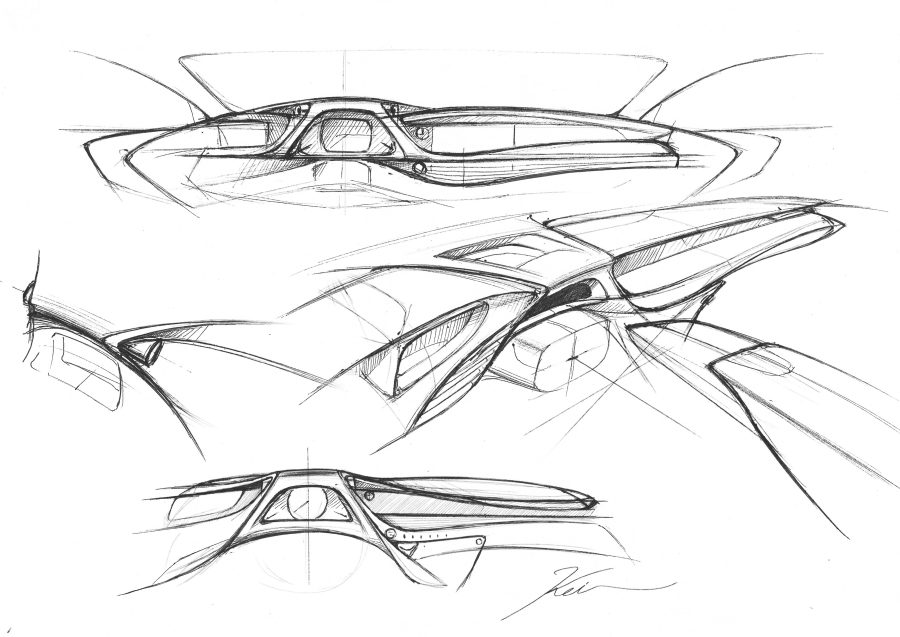
Delightful details abound, from ambient lighting that makes the armrests appear to float, to new woodworking methods that create more vibrantly detailed grain patterns. Meanwhile, the range of textures and surfaces has been carefully chosen to be pleasing to the eye and touch.
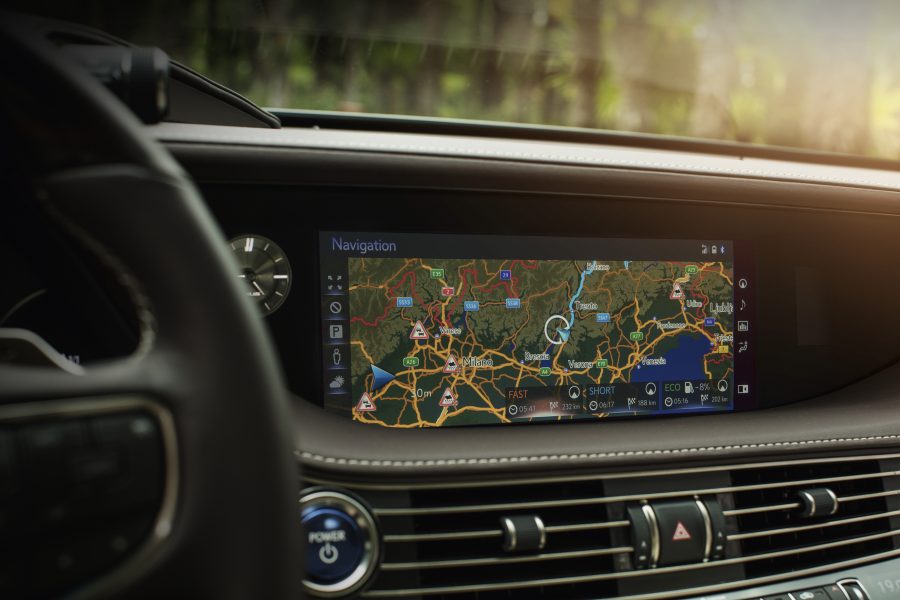
Dashboard
The dashboard of our new flagship saloon presents a sweeping array of metal striations that span its full width and conceal the movable fins that direct airflow from the central air conditioning vents.

Above this horizontal divide is the information zone, where all major displays are positioned at a uniform height for ease of operation.
Directly in front of the driver and within the instrument binnacle is an eight-inch TFT screen, set in a stitched leather frame that forms the shape of a superellipse. An elegant, full-screen animation greets the driver when entering, before transforming into a combination meter surrounding what appears to be a physical metal bezel.
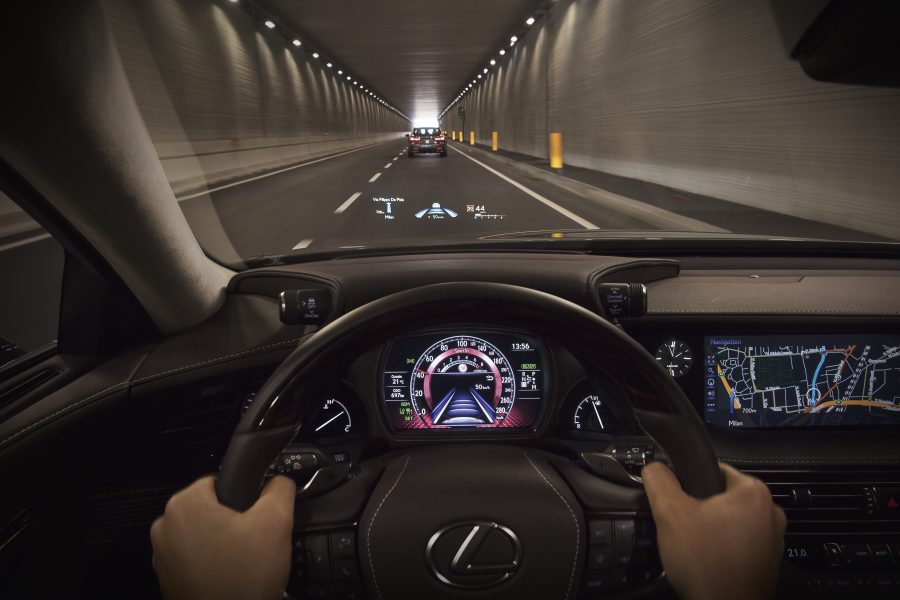
A high-definition colour head-up display – the largest in the class – is fitted as standard. The projected images appear to hover a few metres ahead of the vehicle, minimising the time it takes for the driver’s eyes to adjust between looking at the display and the road ahead.
Seats and steering
The seats of the new 2018 Lexus LS were designed to create a spacious yet comfortably secure environment. Key to this feeling is the way each seat envelops its occupant through a seamless visual and ergonomic connection with the identically upholstered armrests.
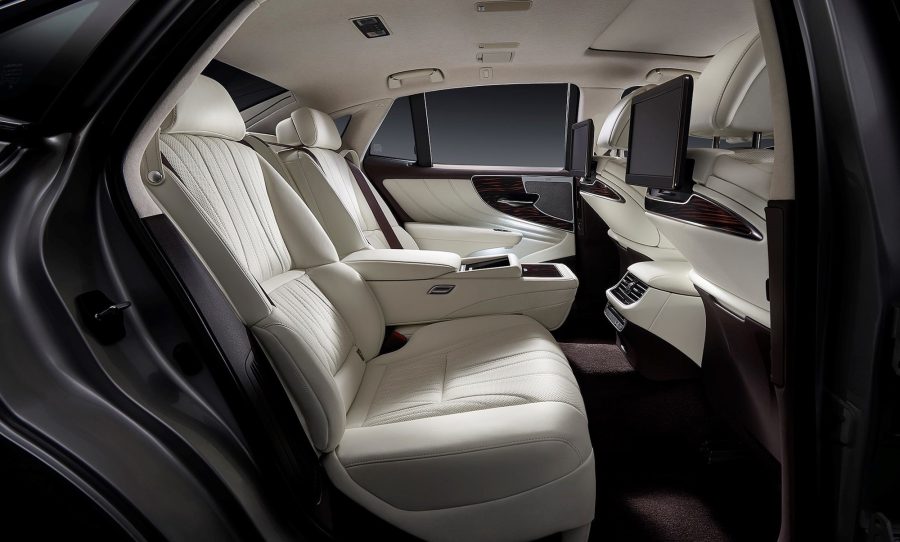
All models feature supple leather upholstery, although in Premier grade models it is possible to upgrade the standard semi-aniline leather for new L-aniline leather that is up to 30% softer. Only the finest one per cent of hides are selected for this premium tanning process.
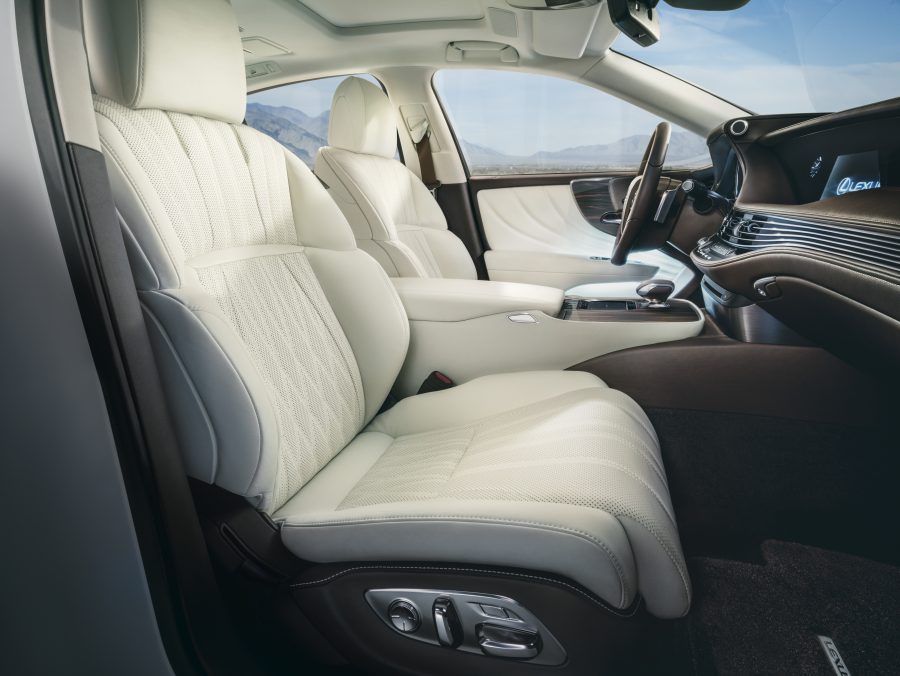
The new leather steering wheel has a three-spoke design and offers a 10mm smaller diameter than that used in the previous LS. Its profile varies around the circumference to provide ideal grip characteristics, while some models come with additional wood trim, rim heating and a perforated leather finish shared with the LC coupe.
Colours and trims
The Lexus LS is offered with a wide range of interior colours and trims, enabling you to personalise the interior appearance through countless permutations. Four perforated leather finishes are available, with up to six different colour treatments per category, while the contrasting inlay trim is fabricated in either wood, metal or glass and can be specified in a total of nine different finishes.
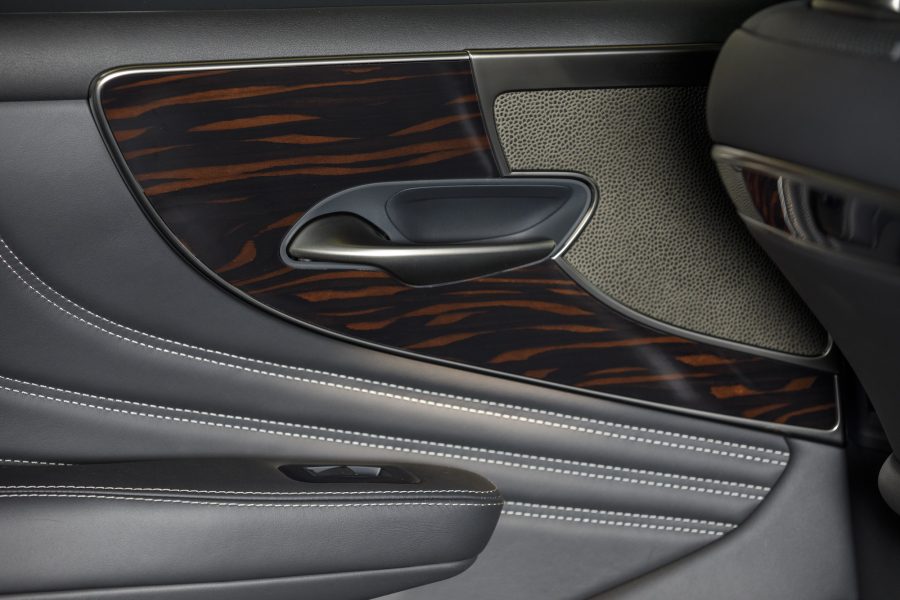
2018 Lexus LS: exhilarating performance
The use of new, lightweight materials was a major contributing factor in the Lexus LS achieving an optimal 51:49 weight distribution from front to rear.

For example, the suspension towers on all four corners are made from cast aluminium, which is up to twice as strong and 50% lighter than equivalent steel parts. High-tensile steel accounts for almost 30% of the vehicle’s mass, more than double the proportion used in the previous LS, while structural adhesive and laser screw welding significantly increase the rigidity of panel joints.
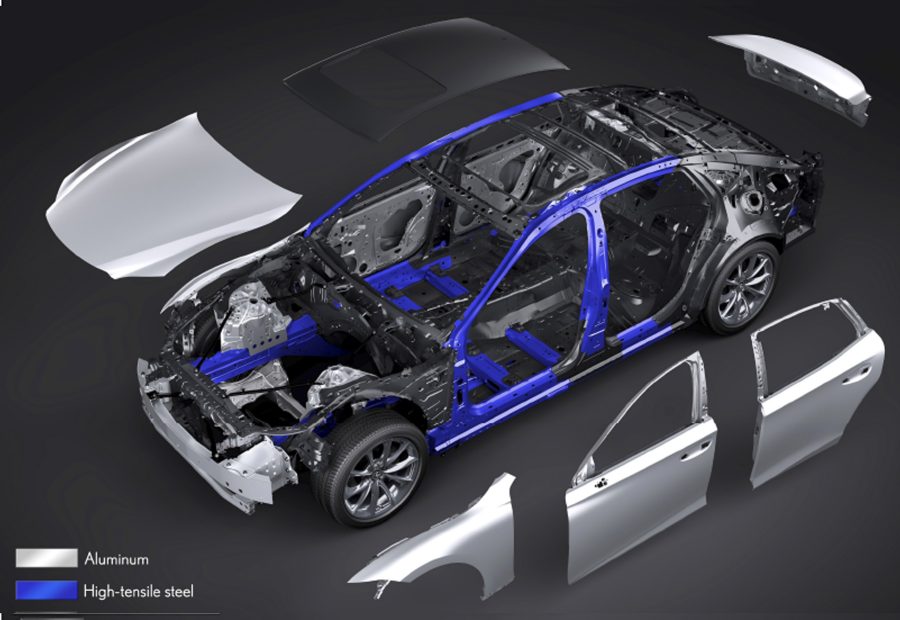
Principal panels, including the doors, wings, bonnet and boot lid and made of aluminium. Where the doors are concerned, this not only saves weight but allowed the engineers to develop a slim but strong structure to maximise space inside the car.
Chassis systems
Suspension compliance has been a defining element in the ride quality and comfort of successive Lexus LS generations. With this latest model, high-mounted multilink suspension systems have been developed, allowing even better performance to be achieved.
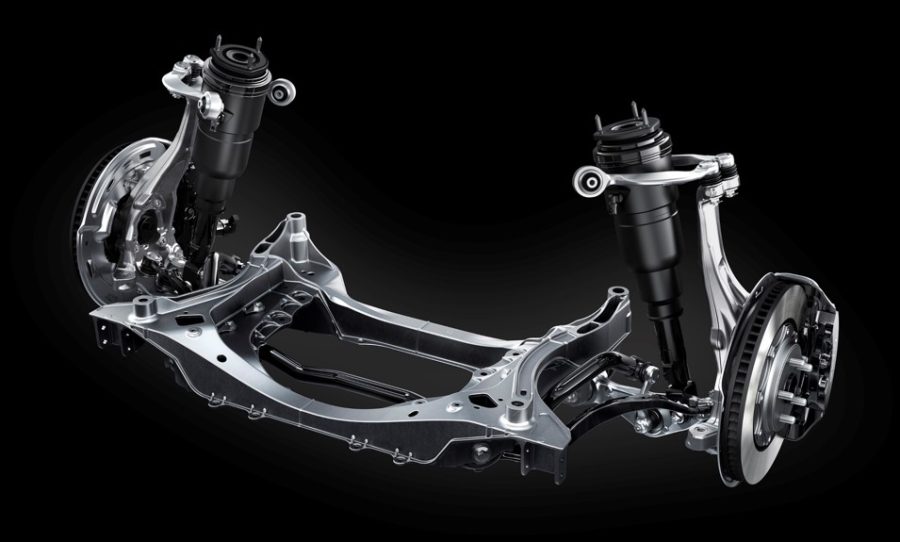
The front set-up uses double ball joints for both the upper and lower control arms, optimising the geometry to increase wheel control and give more precise steering control with reduced effort. On the opposite end, a compact multilink design provides increased levels of stability.
The new 2018 Lexus LS is also equipped with an advanced Adaptive Variable Suspension that provides continuous adjustment between 650 levels of damping control in response to the way the car is being driven and road surface conditions. On uneven roads, the system can increase ride comfort without too great an increase in damping force, but when the steering wheel is turned, damping force is automatically increased to suppress weight transfer and maintain a flat cornering attitude.
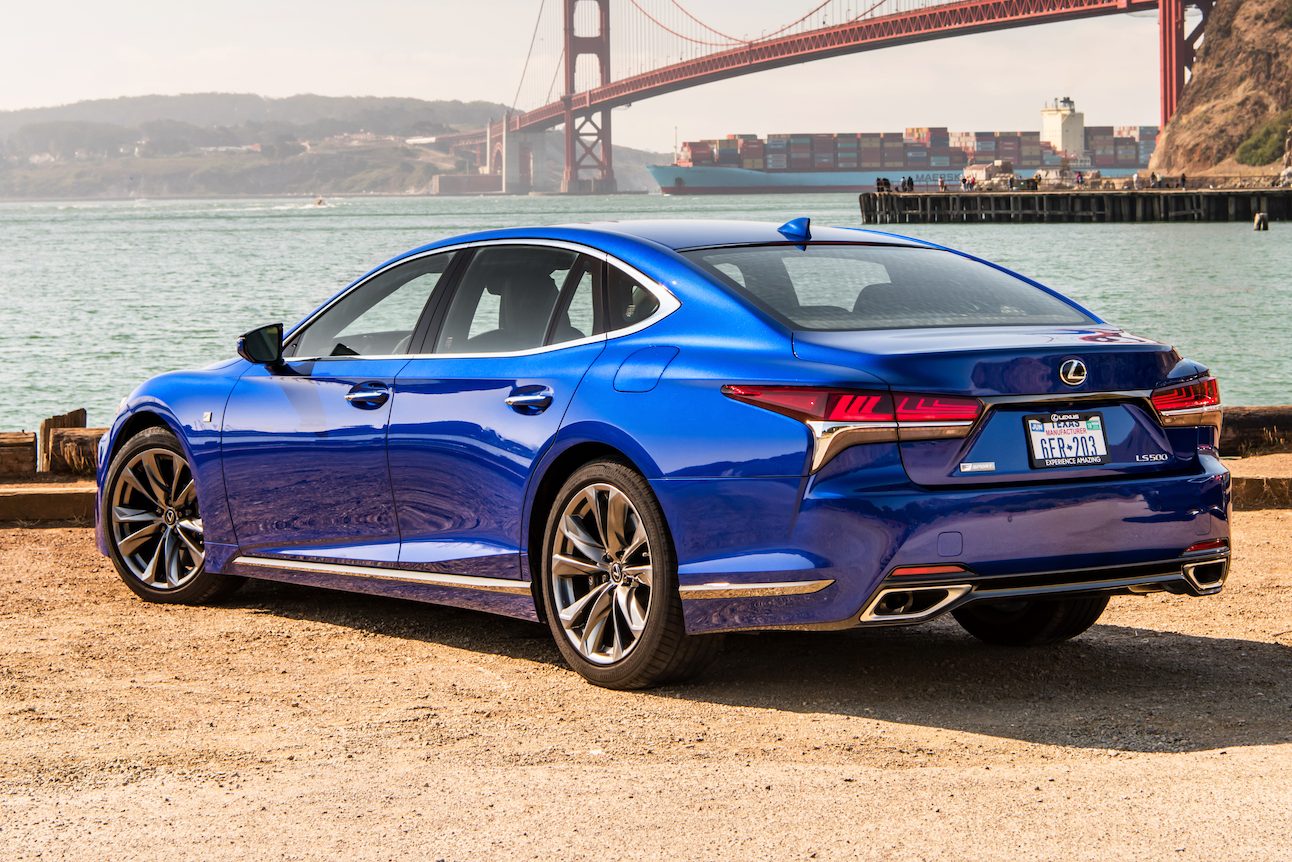
Electronically controlled air suspension is available in selected grades, providing exceptional ride quality. It uses a closed system in which compressed air is stored in a pneumatic tank that supplies pressure at the moment it’s needed to raise the ride height.
Vehicle Dynamics Integrated Management coordinates control of a range of vehicle handling and active safety systems to enhance the overall dynamic performance of the new LS. However, the enhanced Lexus Dynamic Handling system in F Sport models provides an additional level of handling poise and control through subtle adjustments in the angle of all four wheels.
Multi-Stage Hybrid System
The LS 500h has a self-charging, petrol-electric hybrid powertrain that uses the Multi Stage Hybrid System first seen in the LC 500h. It features a naturally aspirated 3.5-litre V6 Atkinson cycle petrol engine, two electric motors/generators and a compact, lightweight lithium-ion battery. Ample torque is generated at all engine speeds and the combined system output is 354bhp, offering acceleration from rest to 62mph in as little as 5.4 seconds.
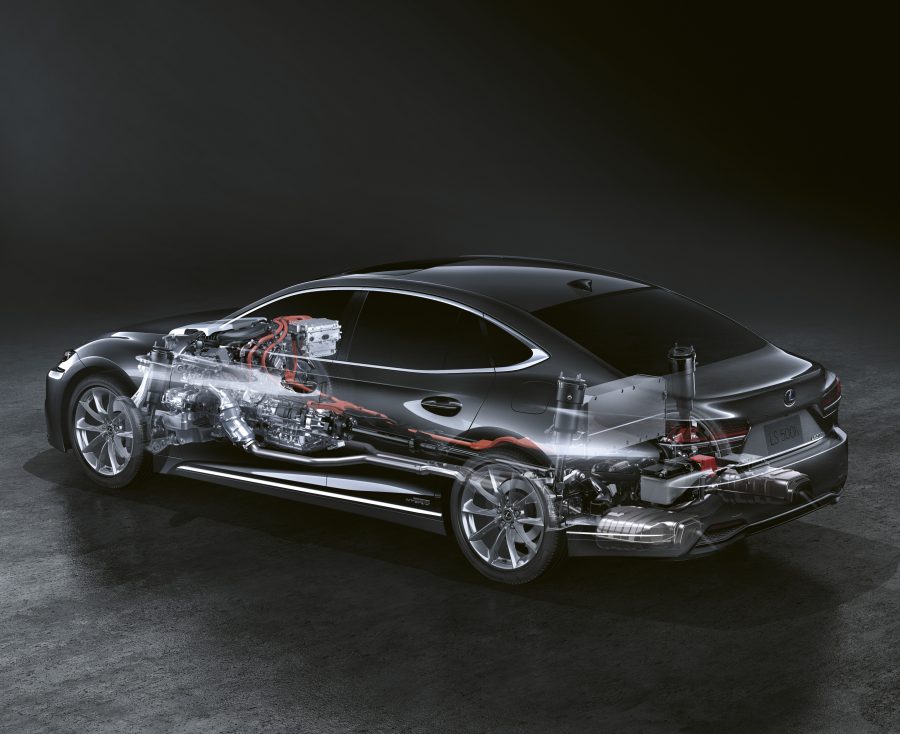
Multi Stage Hybrid System uses the established Lexus Hybrid Drive electric continuously variable transmission coupled to a second four-speed transmission. This arrangement expands the range of gearing to replicate the feel of driving with a ten-speed gearbox. It, therefore, amplifies the feeling of power, providing a more direct response to driver inputs and a higher level of dynamic performance. An additional benefit is that it allows the LS 500h to be driven at up to 87mph with the combustion engine switched off.
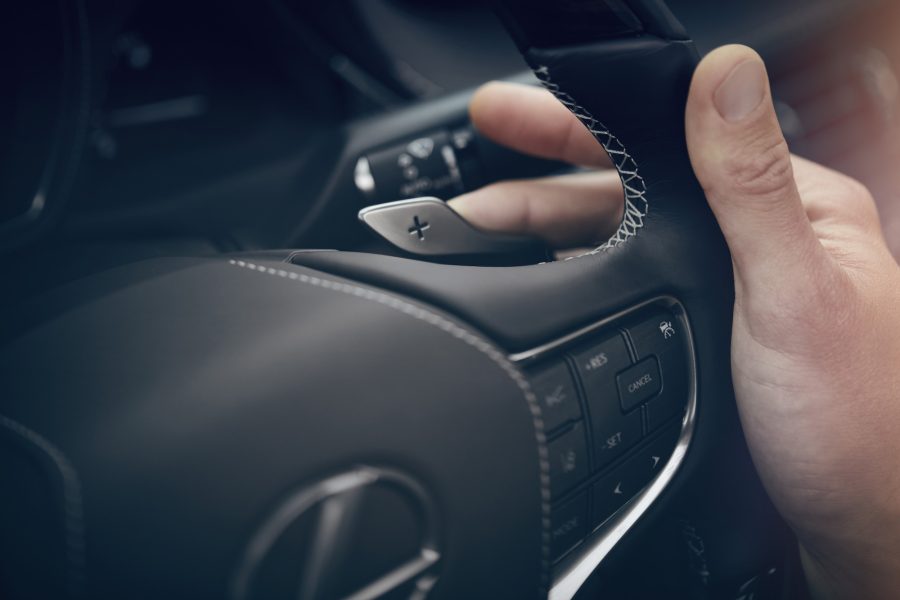
Gear selection is made in line with driving conditions and driver input, while an ‘M’ mode enables gears to be held or changed manually via paddle shifters mounted behind the steering wheel. The car’s performance can also be tailored through Drive Mode Select, which offers a range of tunes to suit personal preferences and road conditions.
2018 Lexus LS: imaginative technologies
Lexus has been promoting the development of automated driving technologies since the 1990s, working toward its goal of eliminating traffic accidents and providing individual mobility.
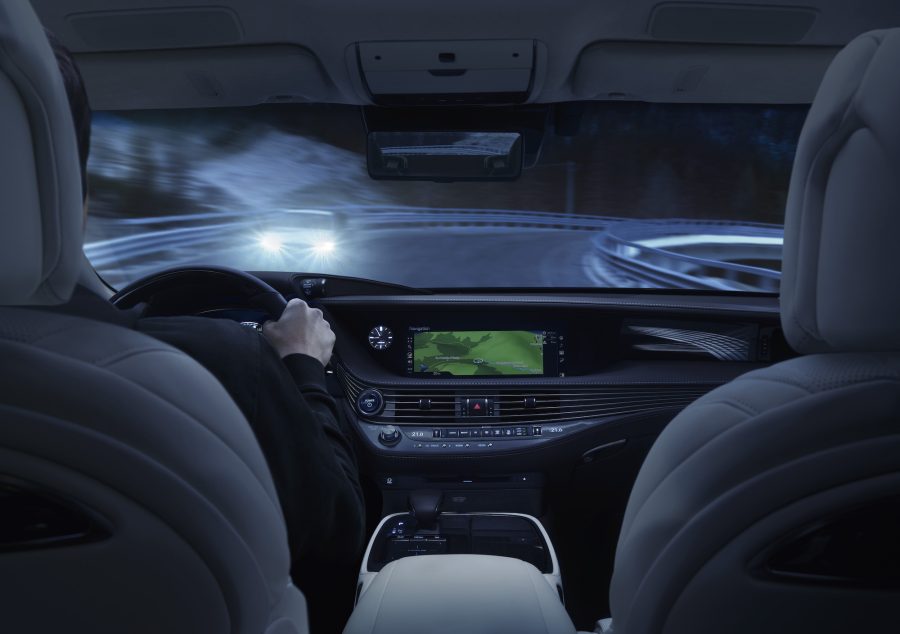
The 2018 Lexus LS makes important progress in this area. All versions are equipped with the latest Lexus Safety System+ technologies, while the high-grade Premium model also offers the more advanced Lexus Safety System+ A, which uses Dynamic Cruise Control and Lane Tracing Assist functions to give a level of automated driving capability.
2018 Lexus LS: active safety technologies
The Pre-Collision System in Lexus Safety System+ A is enhanced with the addition of both Pedestrian Alert and a world-first Active Steering Assist function. It uses millimetre-wave radar and a stereo camera to detect pedestrians and vehicles ahead, supporting collision prevention and damage mitigation by alerting the driver and providing enhanced braking.
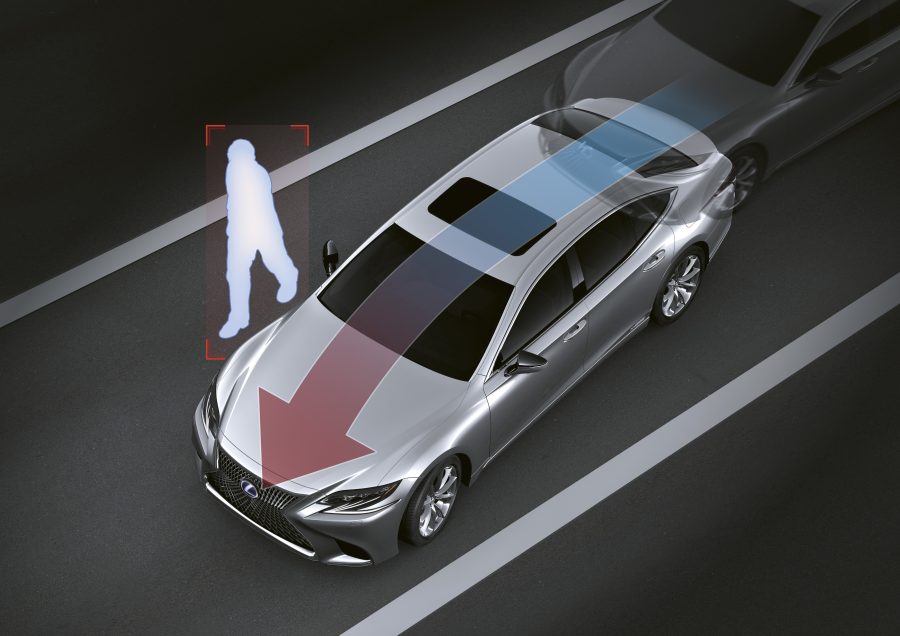
If the system calculates that it would be difficult to avoid a collision using brake control alone, but that it might be avoided with some steering input, it will initiate automatic steering control in addition to triggering an alert and applying the brakes.
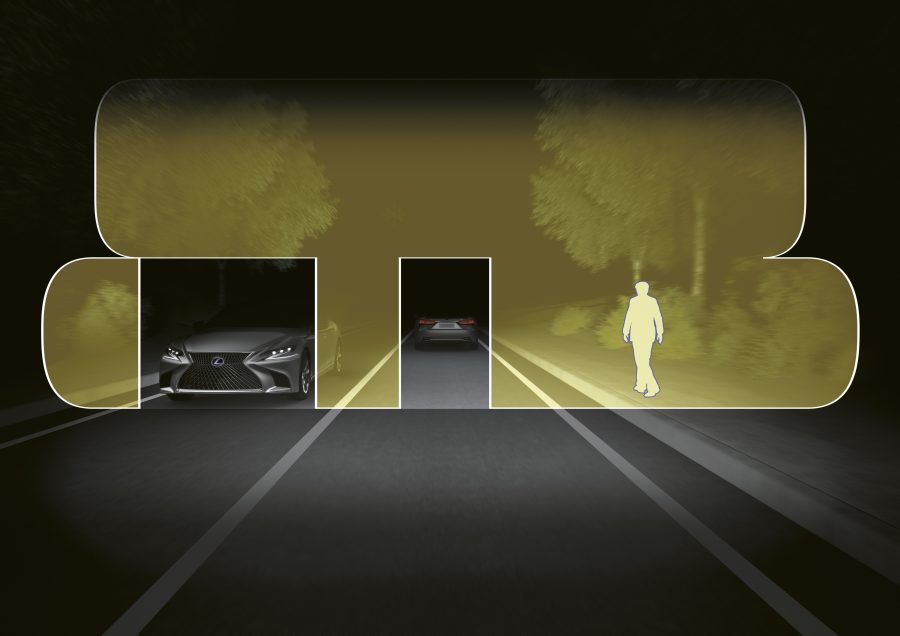
The headlights on most LS models feature an arrangement of eight upper and 16 lower LEDs. The purpose is to provide a new two-stage Adaptive High-beam System, which gives finer control of lighting strength and distance and allows the car to be driven for longer on high-beam without dazzling oncoming vehicles.
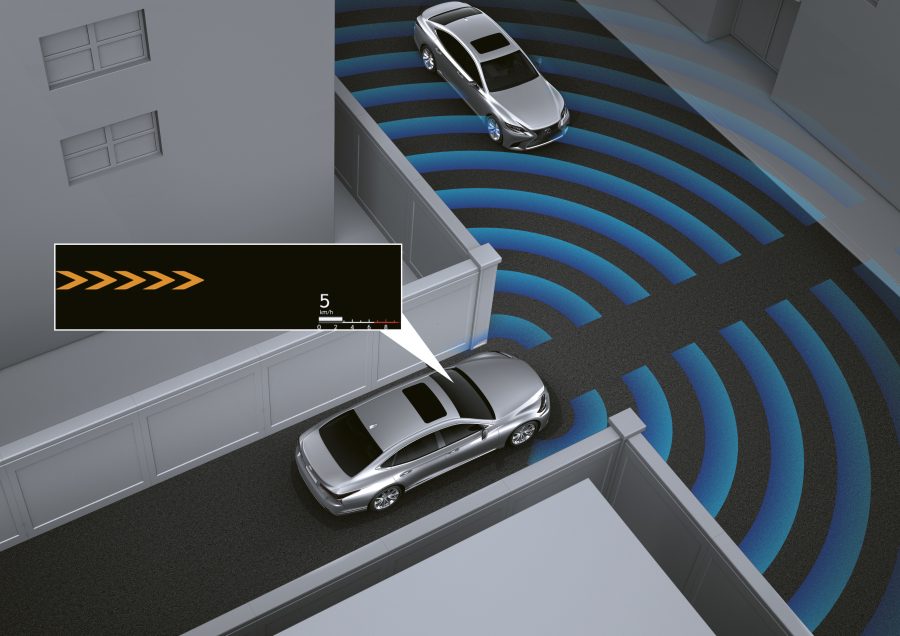
Additional active safety technologies include Front Cross Traffic Alert, which is designed to help prevent collisions at intersections by detecting vehicles and the direction from which they are approaching; Lane Tracing Assist, which helps prevent the car straying from its traffic lane, even on roads not marked with lines; and Road Sign Assist, which acquires and displays road sign information to reduce the risk of the driver failing to notice important highway commands.
Driver assistance technologies
Lexus CoDrive adds Lane Tracing Assist to the basic functions of Dynamic Radar Cruise Control to provide steering support in line with the driver’s intentions and to reduce his or her burden on roads with many bends or in traffic jams.
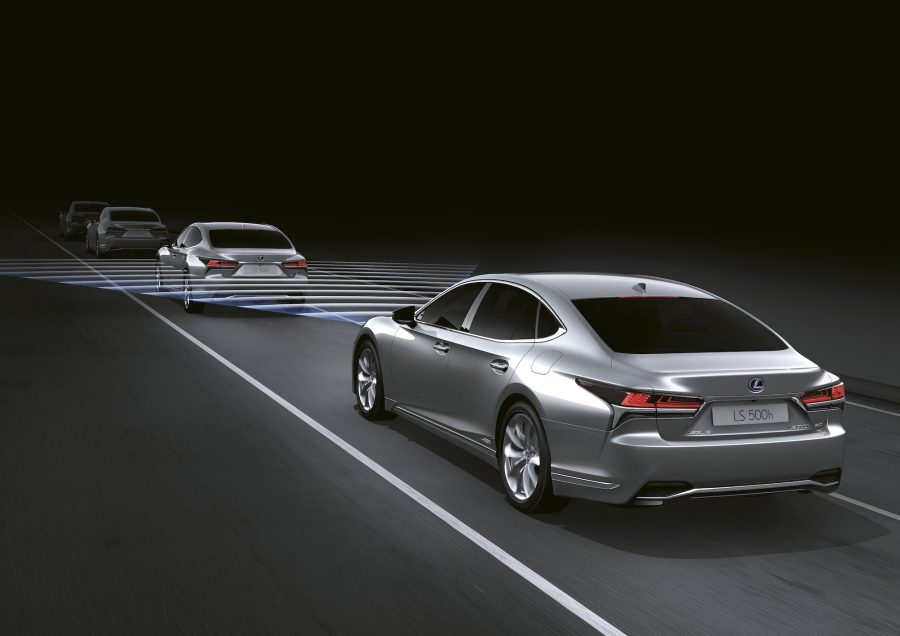
Dynamic Radar Cruise Control offers outstanding recognition performance with wide-angle detection to help make driving more comfortable and reassuring when behind another vehicle. Meanwhile, Lane Tracing Assist uses steering control to provide lane-keeping support, gathering direction data from the vehicle as well as the lane demarcation lines.
Additional safety technologies
Low-speed braking support systems reduce the risk of damage when parking or manoeuvring, helping the driver avoid hazards such as nearby moving vehicles, pedestrians and stationary objects. This includes the world’s first rear pedestrian support brake, which detects pedestrians behind the vehicle and will brake the vehicle if there is a risk of a collision.
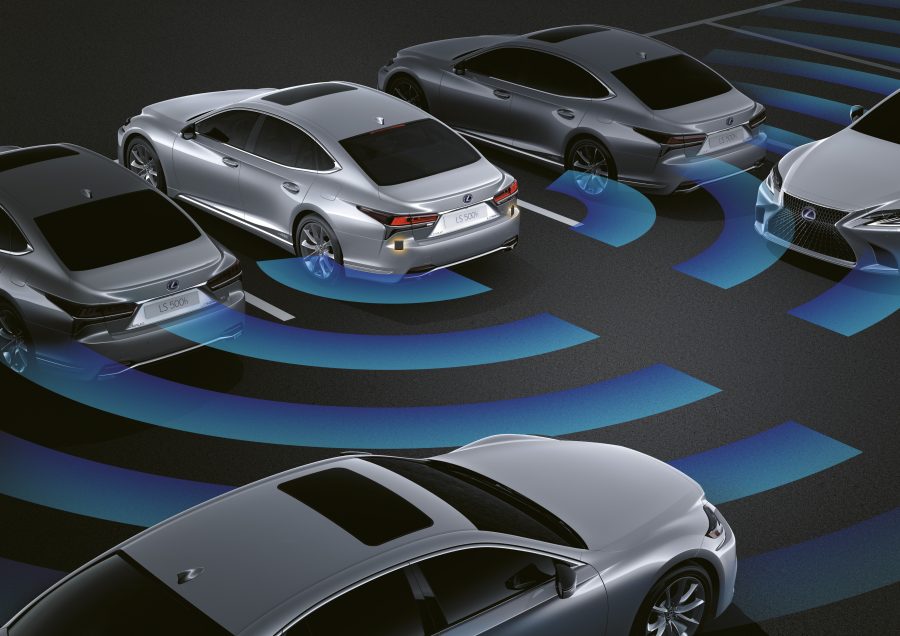
Side clearance view and cornering view functions have been added to the Panoramic View Monitor, making it easier for the driver to determine safe space in the vehicle’s immediate vicinity. Cameras around the car generate a bird’s eye view, including a three-quarter angle in line with the car’s direction when moving through a bend or turn.
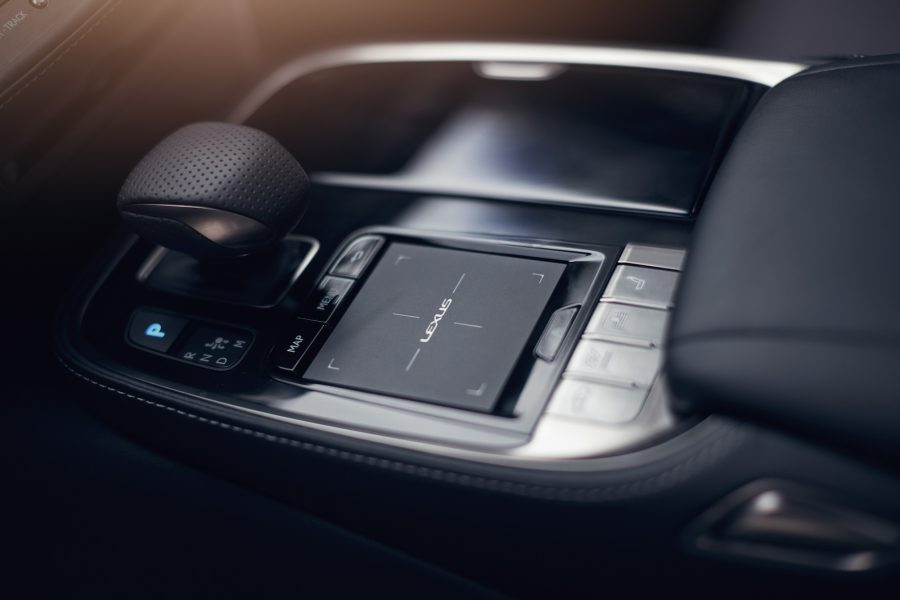
The new LS is equipped with a next-generation multi-media system that provides complete control of navigation, audio, media, telephone, apps and climate control, as well as adjustment of key vehicle settings. It uses a 12.3-inch high-resolution screen and offers dynamic voice recognition, although manual operation is also available by means of the familiar but enlarged Remote Touch Interface.
2018 Lexus LS: Takumi craftsmanship
The fine skills of Takumi craftspeople contribute to the high quality of every Lexus vehicle. But in developing the new LS flagship saloon, Lexus has gone further to combine the traditions of Japanese culture and aesthetics with contemporary design and advanced technologies.
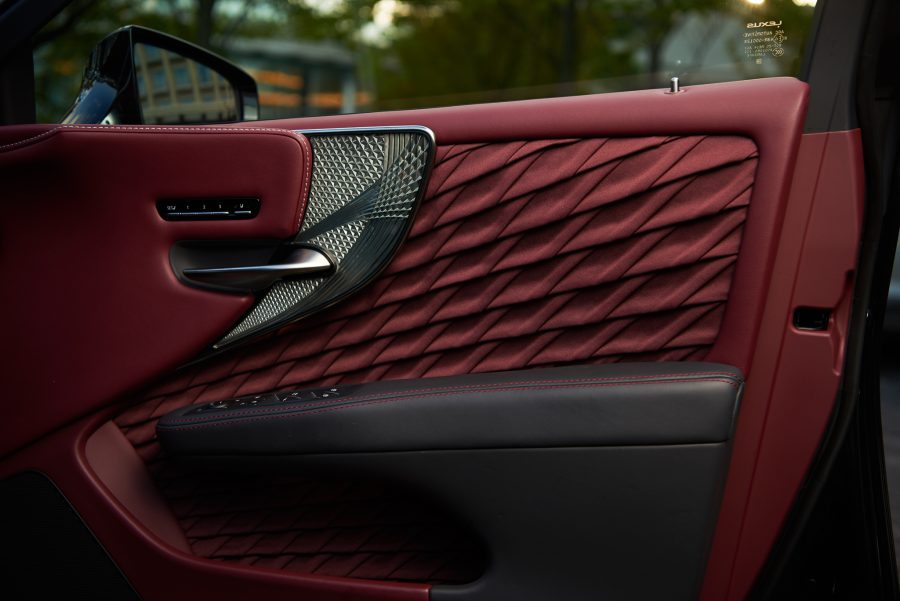
The Lexus Takumi
The Takumi are the most senior craftspeople in Lexus, responsible for ensuring that superb quality is achieved in every stage of the car-making process. Honed through years of experience, their highly trained senses can detect the smallest imperfections and the fine adjustments that may be needed to improve performance or appearance.
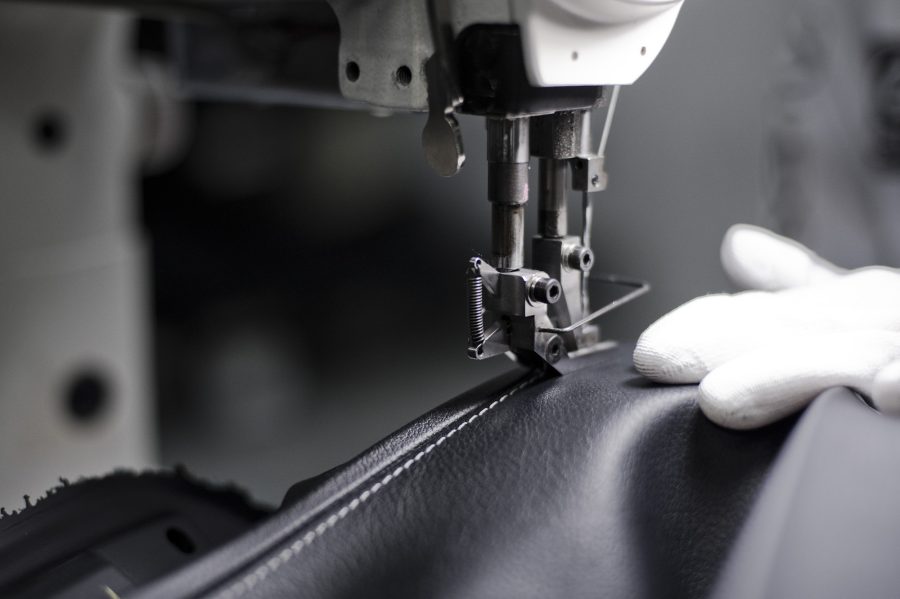
They contribute to hand-crafted elements of the vehicle, such as the precision stitching of leather upholstery. This skill alone involves such intensive training that in Lexus’s giant Kyushu factory there are just 12 Takumi responsible for the detailed accuracy of every stitch.

They are also responsible for training and inspiring other technicians, helping them learn skills that will make them the Takumi of the future. To earn such status, Lexus craftsmen have to complete a number of rigorous challenges. Every day they must demonstrate their dexterity and attention to detail by perfectly folding an Origami cat design in less than 90 seconds. What’s more, they have to accomplish the task using only their non-dominant hand.
Kiriko glass ornamentation
The traditional skills and designs of Japanese Kiriko glass-making have been used to create a unique door panel ornamentation for the new LS.
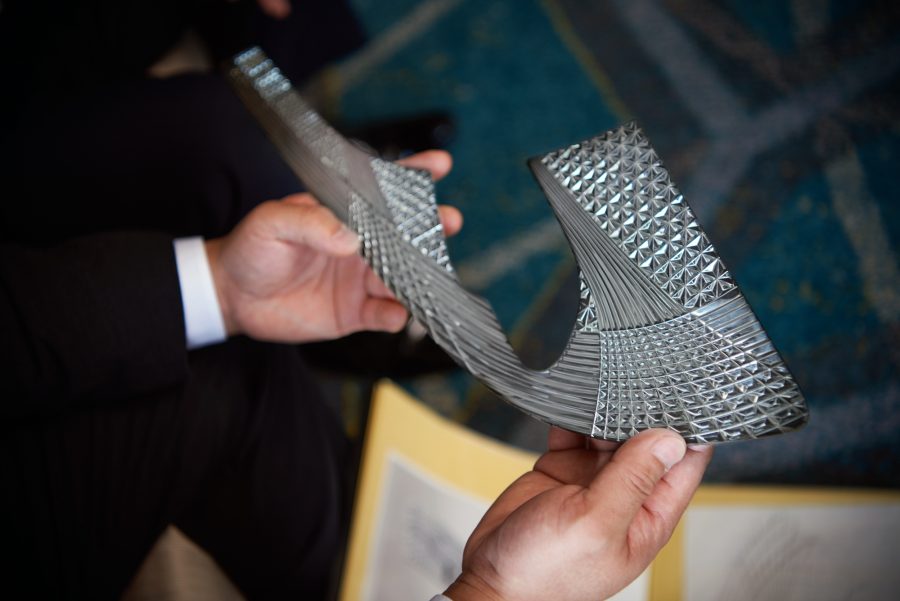
Masters of Kiriko worked with Lexus to replicate the hand-carved appearance of the glasswork, which adds extra dimensions of visual and tactile appeal with its light-catching, multi-faceted surface. Although the glass looks delicate, it is in fact very strong thanks to modern reinforcement technology.
Hand-pleated door panels
The three-dimensional pleating pattern in the LS door panels is achieved using the time-honoured skills of Origami paper-folding. It requires individual sheets of fabric to be expertly folded – a process that took four years to develop and can only be carried out by hand.
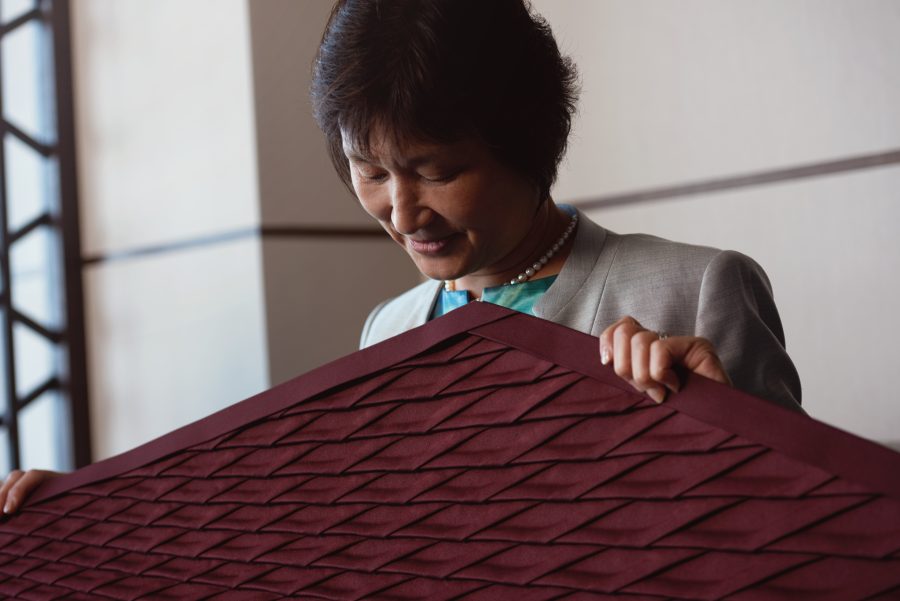
Pleasing to the eye and touch, the finished panel changes in appearance according to the time of day and cabin illumination, adding to the elegance and enveloping quality of the interior.
Art Wood
Lexus has applied new ways of working with veneers to produce unique designs and effects that distinguish the new LS from any other model. The new Art Wood finishes fusing the natural beauty of wood with brave Lexus design.
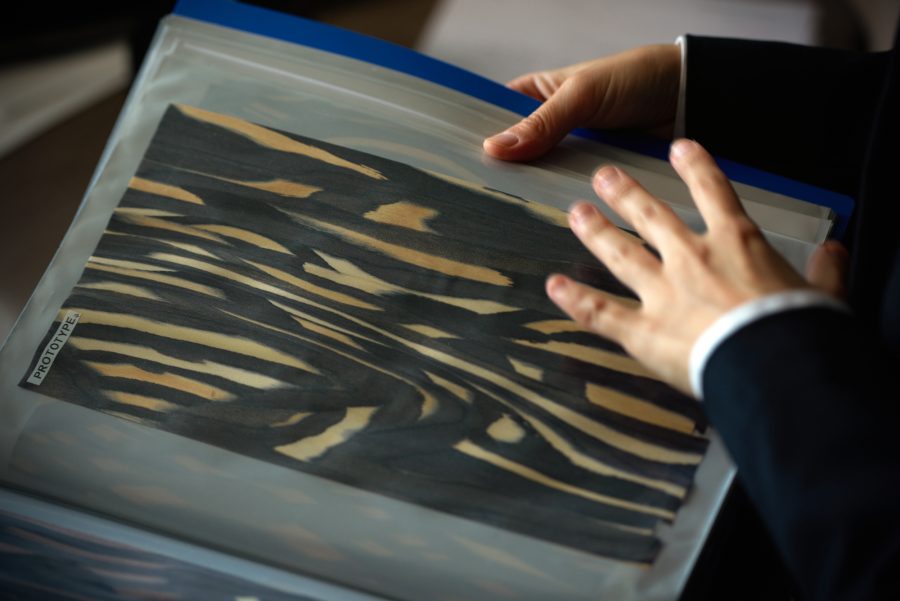
Art Wood Organic uses a precise layering technique and natural gloss coating to bring out flame-like grain patterns that are vibrant and contrasting. Art Wood Herringbone uses the same techniques as in the production of fine musical instruments, hand-grafting together small pieces of wood to create delicate symmetrical patterns.
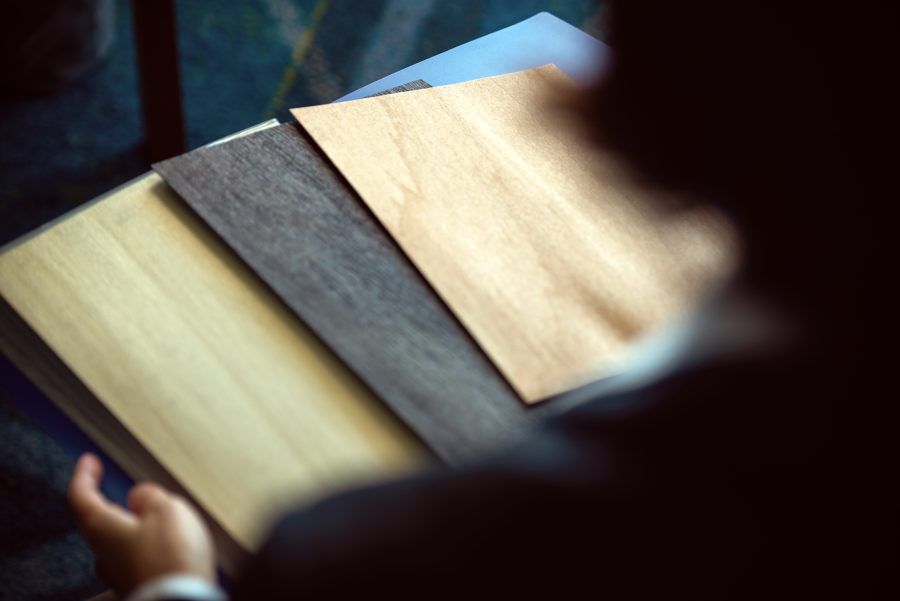
A third interpretation, Art Wood Laser Cut, uses laser technology to cut through the veneer to expose a metal sub-layer, creating a pattern inspired by the way the Lexus L-motif is incorporated into the mesh of the vehicle’s spindle grille.
2018 Lexus LS: evidence of Omotenashi
With regard to the Lexus LS, the influence of Omotenashi begins with a welcome sequence as the driver approaches the vehicle. Meanwhile, meticulous attention to detail ensures every occupant is provided with the most comfortable, safe and relaxing environment possible.
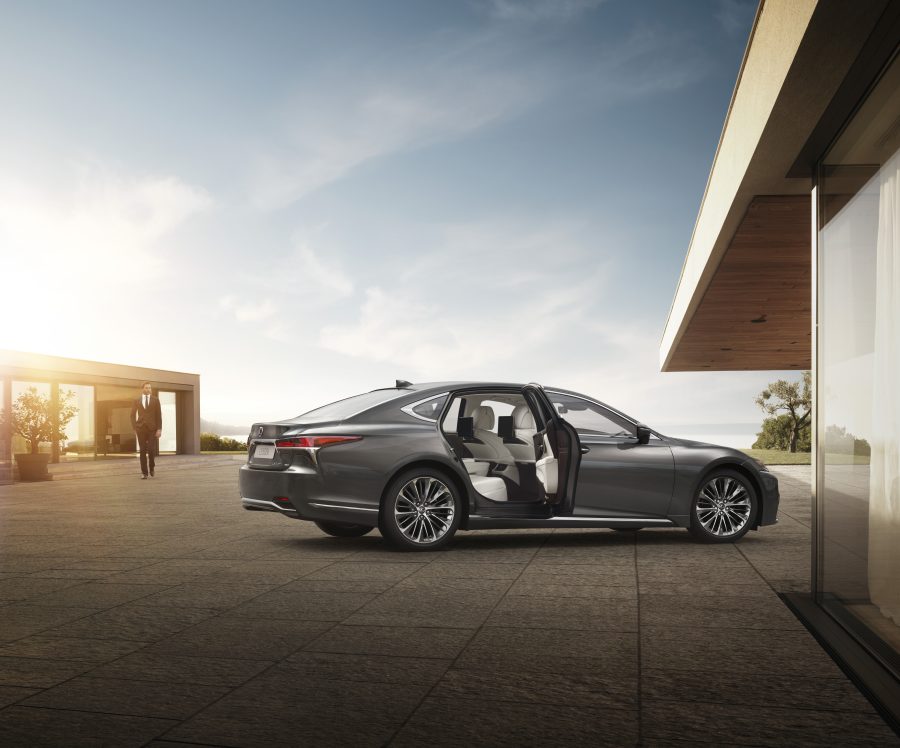
Premium access
The air suspension in some LS models provides a premium access function, which automatically raises the normally low-slung saloon by 40mm to present the seats at an ideal 555mm hip height when the vehicle is unlocked. Once all occupants are on board and the hybrid system is switched on, the car returns to its regular ride height. The same convenience is made when the car is parked and a door is opened for someone to exit.
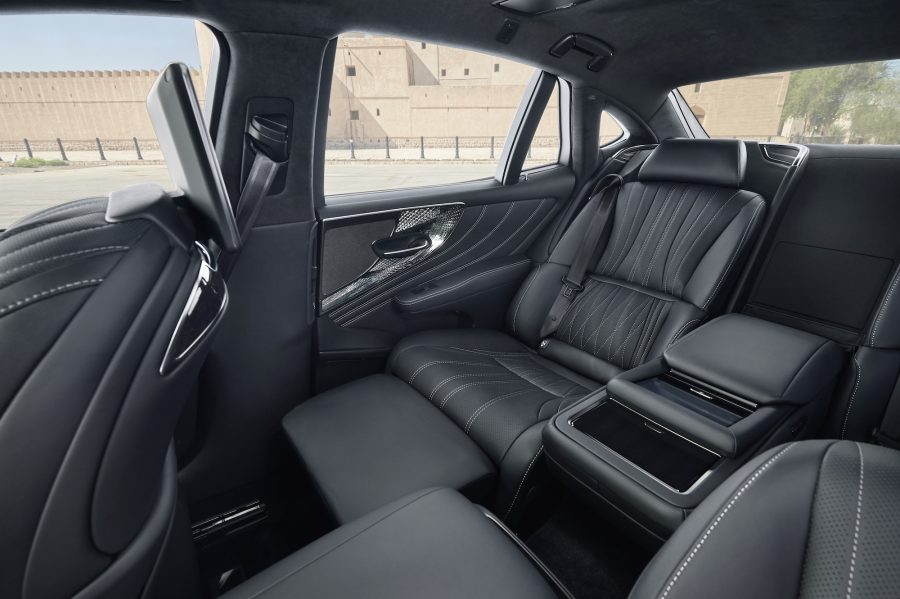
Further preparation for arrival is provided for the driver and front passenger, with the outer cushion bolster of each seat opening out and the seat belt holder extending by 50mm when the front doors are opened. The driver’s seat also rises and optimises its longitudinal position for easy access. All elements then return to their most supportive positions when the doors are closed.
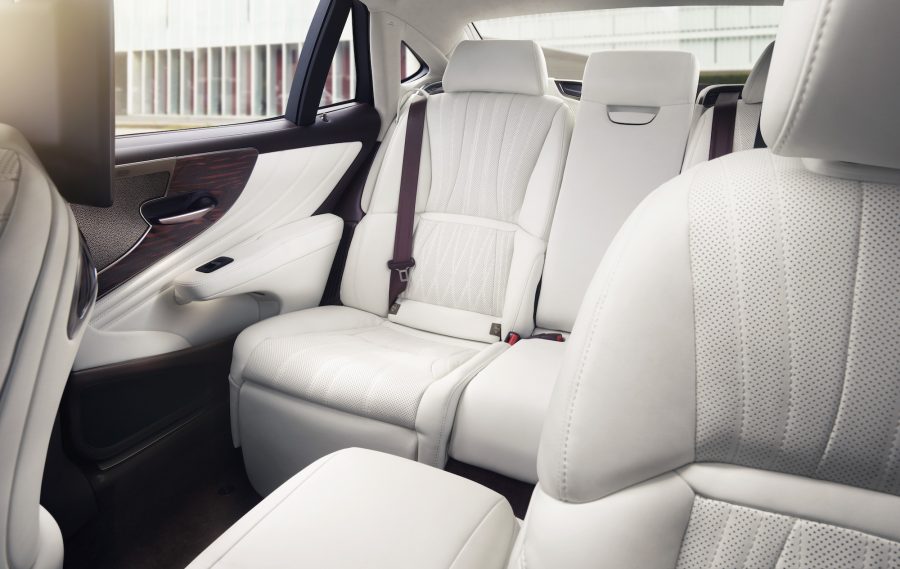
Cabin lighting adds to the sense of welcome, with illumination inspired by the soft glow of traditional Japanese Andon lanterns. Light sources are located behind the door trim panels and armrest, giving indirect, downward illumination that creates a sense of spaciousness.
Seat design
The driver’s seat is available with 28-way power and pneumatic adjustment, including controls to adapt support for the back, pelvis and hips. Its design allows people of all shapes and sizes to find their ideal position at the wheel and feel at one with the car.
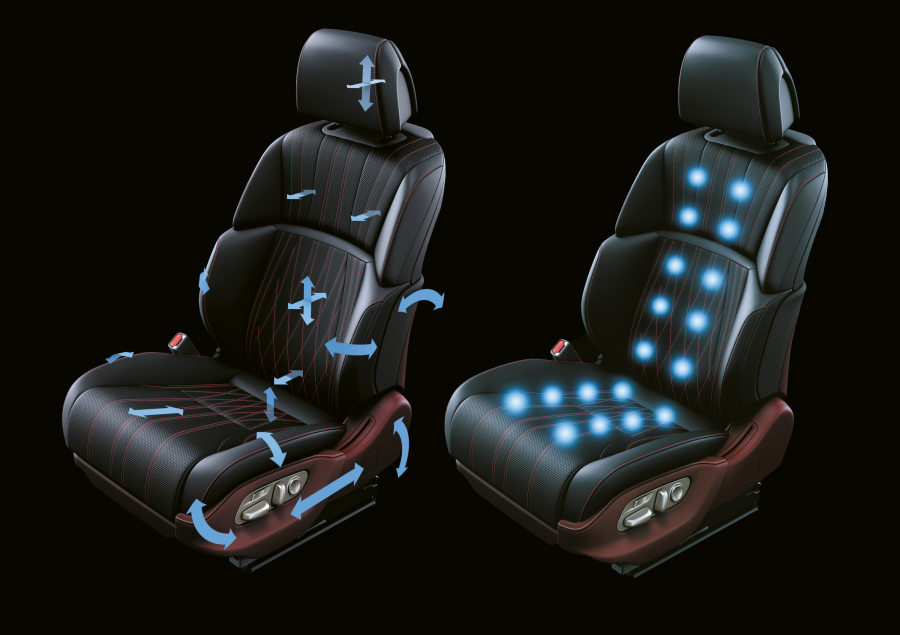
The multi-function touchscreen in the rear centre armrest console is used to precisely control the position of the rear seats, as well as audio, climate, sunshade and interior lighting functions. The rear seats are available with best-in-class 22-way adjustment, including back, hip and pelvis support, and ottoman leg-rest extension.
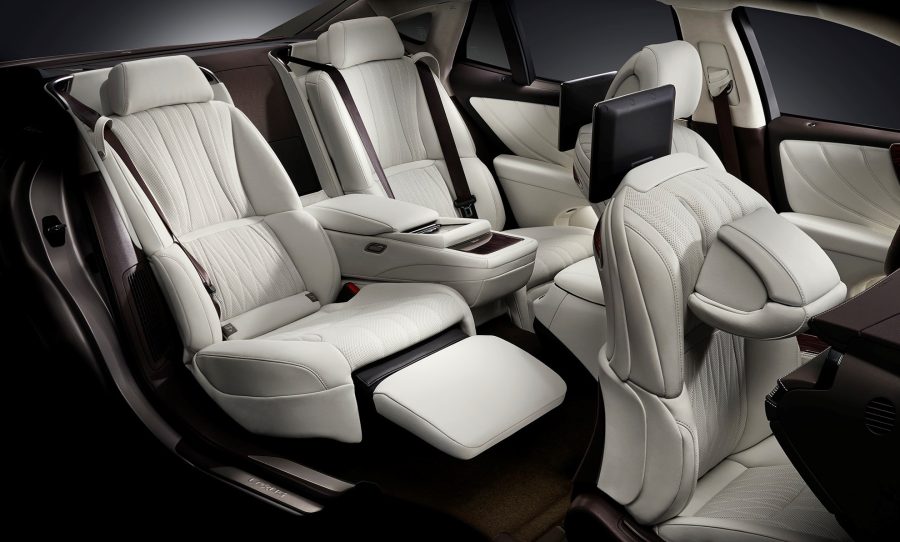
There are three pre-set seat positions: Business, which is the default; Entertain, which reclines the seat for comfortable viewing of the entertainment monitor; and Relax, which extends the leg ottoman, recline the seatback to a class-leading 48 degrees and moves the front passenger seat to provide maximum legroom. The seat automatically returns to its default position when the rear door is opened, allowing an easy and comfortable exit.
Shiatsu massage functions
Lexus consulted Japanese Shiatsu experts to help design new massage systems for the front and rear seats that provide the right degree and location of thumblike pressure to help the occupant relax.
The front seats of some models offer five separate massage courses, working with a centripetal or centrifugal action, or focusing on the lumber, upper and lower body regions.
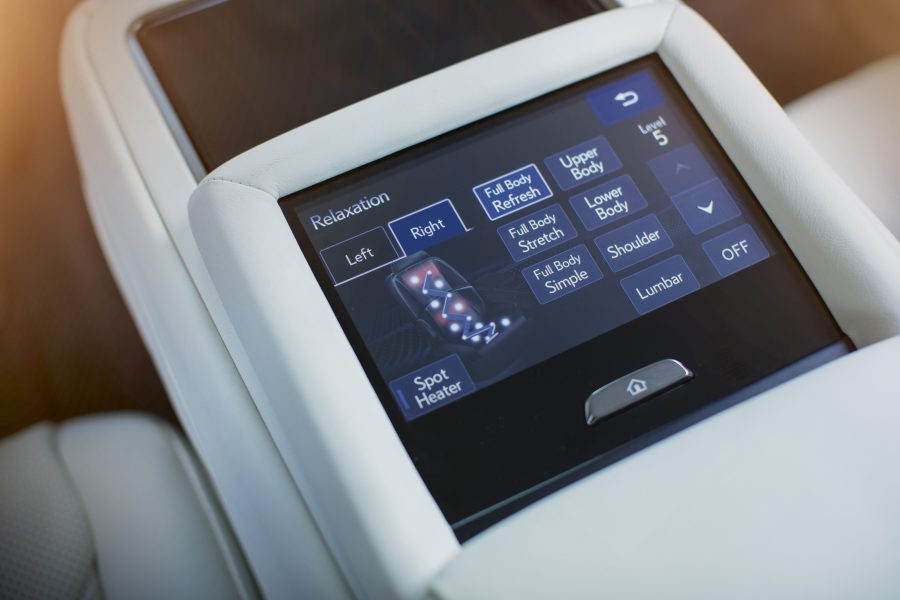
The rear seat massage function has seen its operating area expand to cover the occupant’s thighs as well as back. In a world first, the system includes two spot heaters for the shoulder and lower back to provide targeted heat stimulation in conjunction with the Shiatsu massage. Multiple setting options let the user tailor the massage sequence to suit their preference.
Climate Concierge
Lexus has succeeded in engineering a more compact yet no less efficient climate control system to support the highest levels of onboard comfort. The reduced size helped secure the car’s low bonnet line and low centre of gravity, while the separate rear air conditioning system has also been made smaller so there is less impact on luggage space in the boot.

Providing coordinated and efficient control of the air conditioning, seat heating and ventilation, and the heated steering wheel is the Climate Concierge system. It uses an infrared matrix sensor to monitor 13 zones across the interior, including the body temperature of all occupants. This allows fine control of heating and cooling, taking into account factors such as uneven heating caused by low-level sunlight through the windows.
2018 Lexus LS: powered boot lid
The new LS is available with a power-operated boot lid that can be opened and closed hands-free, using a kick-sensor beneath the rear bumper. When carrying luggage, or wanting to avoid touching the car’s bodywork, the user only needs to have the smart key on their person, stand within the sensor’s range, and pass their foot under the bumper.
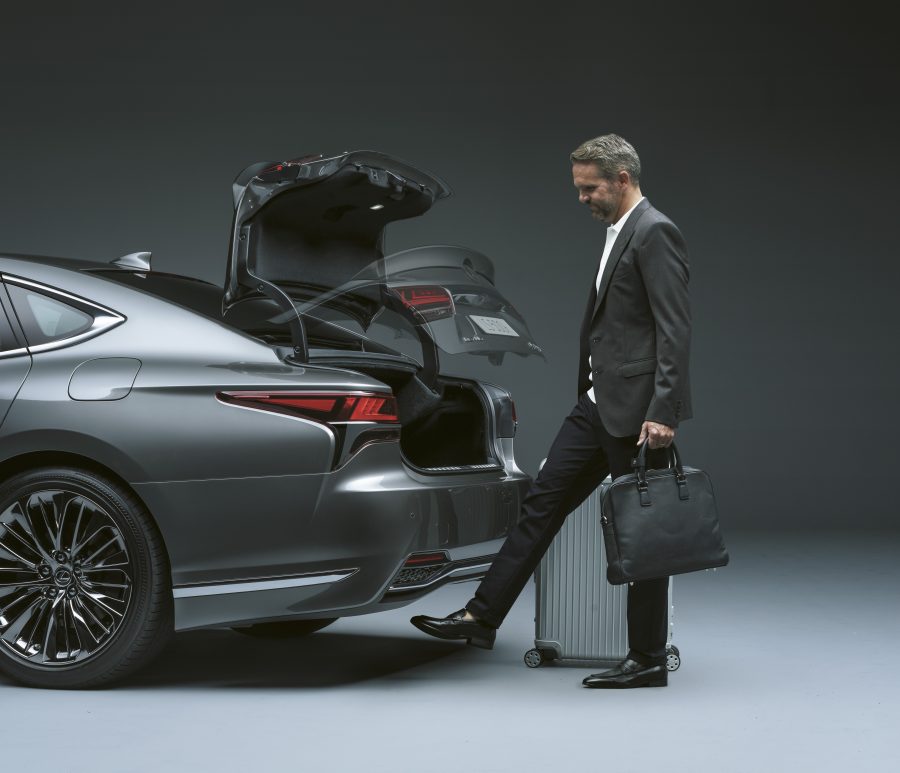
All information was correct at the time of publishing.
